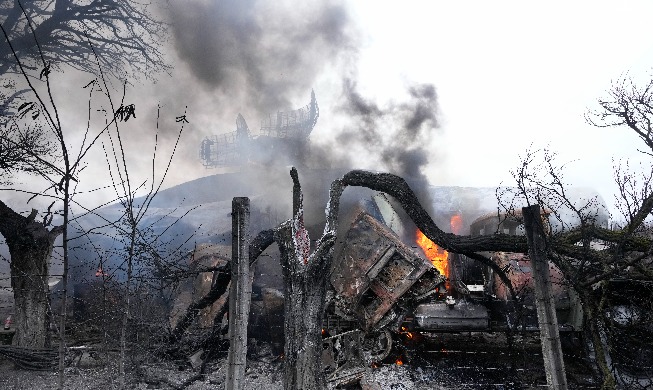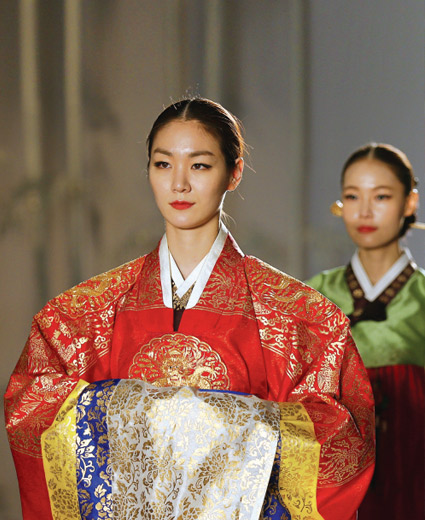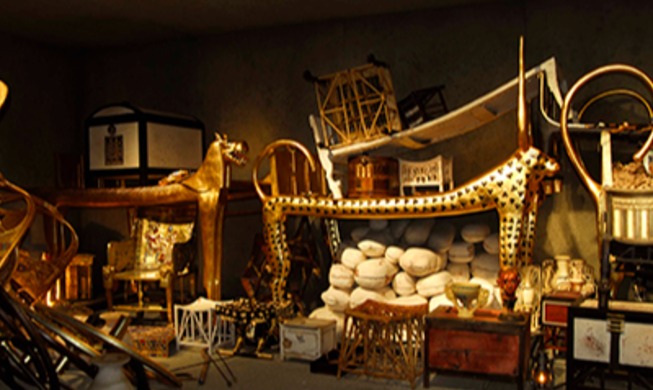-
 Korea.net's 24-hour YouTube channel
Korea.net's 24-hour YouTube channel- NEWS FOCUS
- ABOUT KOREA
- EVENTS
- RESOURCES
- GOVERNMENT
- ABOUT US

By Mark Peterson
Professor emeritus at Brigham Young University
Japan has applied again for a UNESCO World Heritage designation for mines. This time the mines are on Sado Island, an island north of Honshu, the main island of Japan.
This is the second time such a cultural memorial is being created at a place where Japan abused Korean workers on a large scale during World War II. Japan last time sought to designate a coal mine on an island, Hashima, off its southern coast. Again, Japan is calling attention to its historical industrialization and bragging of the alleged greatness of Japanese culture and economy. But at the same time, it is reminding the world of its crimes committed during World War II against Koreans.
"It's an ugly business -- memories of war crimes and massacres -- and it's just better to forget it and move along." That is reportedly the objective of former Japanese Prime Minister Shinzo Abe, who is the behind-the-scenes puppet master of the conservative wing of the ruling Liberal Democratic Party. Media reports say incumbent Prime Minister Fumio Kishida wanted to postpone the application for the Sado mines because of Korean objections, but was pressured by Abe, who in many ways seems chronically disrespectful of Korean interests. Abe reportedly wants to cleanse historical records of Japanese war crimes, yet pushing this UNESCO recognition of a war crime site will have the opposite effect for Japan.
The issue is apparently going to fester for a while since the application review process takes time. The meeting to decide this application will not be held until May next year.
What is the purpose of a UNESCO World Heritage designation? Protect and preserve important cultural sites? How do abandoned gold mines qualify as sites that need protection? Protected from urban sprawl? Not on an island that is losing population; Sado's was once 100,000 but is now 55,000. Protection from industrial exploitation? Opening the mines again would ruin their historical value? Thus "protecting" the mine makes no sense at all.
Heralding the mines' historical value? If they were once the world's largest producer of gold or silver, shouldn't UNESCO look for the best producing mines around the world as World Heritage sites? Where is the world's largest producing diamond mine? Ruby mine? Emerald mine? Opal mine? Granite mine? Gravel pit mine? (The term "gravel pit" might sound like a joke, but my geologist friends tell me that the mining operations worldwide that produce the most wealth are not for gold or diamonds but sand and gravel.) The point is that honoring a closed mine of whatever character hardly seems to fit the charter of UNESCO objectives.
No, there's something else going on here. Is Japan responding to regional needs to be recognized? If certain provinces have a UNESCO World Heritage site and benefit from increased tourism but other provinces are left out, are the latter going to make a bit of a reach to find something in their provinces of note? "We have an old gold mine, recognize us!" Is that the motivation? Does the Japanese government need to respond to Niigata Province in its desire to be recognized?
Are there people that visit UNESCO World Heritage sites like they've got a checklist and visit as many as they can before they die? The UNESCO "bucket list" contains over 1,000 items, and there is a race for countries to sign the UNESCO list for whatever political or "image value" it gives that country. The U.S. notably has an anti-United Nations attitude that has limited the number of sites it could easily win recognition for, but does not want the UNESCO stamp on it. For example, my home state of Utah has five national parks, none of which are on the UNESCO list. This is because the people living in each area want fewer visitors, not more, and have a negative view of the U.N. and its organs.
There seems to be a contest for which country is the best and has the best heritage by using the UNESCO list as a measuring stick. In this regard, the regional playoff system seems to start with the ancient cultures of Greece and Rome. Today Italy is winning with 58 sites, with Greece having only 18. In Europe, Spain and France are tied at 49, beating England's 35 but Germany is ahead with 52. In North America, the U.S. has 24 and Canada 20 but the winner is Mexico with 35. In Central Asia, India is ahead of Russia, 40-30. And in East Asia, Korea has 15 (with two more in North Korea) and Japan 25, but the winner is China with 57. Is Japan trying to catch up to China?
The story gets more complicated when you look at the "tentative list" of sites in preparation to be submitted for approval. The Sado mines are among five on this list from Japan, giving the latter a total of 30. South Korea has 12 more sites and North Korea, with two already approved, has five. If all the Korean proposals are approved, both Koreas would have 34, jumping ahead of Japan on the list. But the horse in the race that's farthest ahead with 57, China, has 59 more on their list. In East Asia and the rest of the world, China is the horse to bet on for winning the UNESCO race. (Italy, the leader with 58, has only 31 on the tentative list.)
Instead of objecting to the sites proposed by Japan, Korea should welcome more sites and thereby include in the UNESCO Memory of the World Register the horrific abuses carried out at the Sado mines. The site should be a memorial to not only Japan's industrial progress, but also the inhumane abuses that Japan committed there. Rather than try to get these places off of the UNESCO list and make them disappear and forgotten, Korea should publicize each place as yet another site to be remembered for the infamous abuses of human rights that took place there. Korea can use the UNESCO list as the starting point for a list of memories to be enshrined in the hall of Japan's inhumanity shown through its war crimes.
Korea can create a list of sites where not only forced labor occurred but those where "thought prisoners" were incarcerated and tortured; young women were recruited by trickery and forced into sexual slavery; "comfort stations" were set up all over Asia; massacres of Korean civilians such as the Korean section of Tokyo, where 6,000 Koreans were slaughtered by Japanese mobs after the Great Kanto Earthquake of 1923, Jeamri Church in Hwaseong, Gyeonggi-do Province, which was burned to the ground by Japanese soldiers with parishioners inside reading the newly proclaimed Korean Declaration of Independence in 1919, slaughter of two million to four million Korean soldiers and civilians during the 1592 Japanese invasion of Korea, and innumerable Japanese pirate raids along the coasts of Korea. This list of places of infamy could be linked to the Japanese UNESCO sites as a way of keeping Japanese aggression and abuses in the minds of this and the next generation "lest we forget."
Japan clearly does not want to honor Korean objections, which simultaneously and ironically push the memory of Japanese war crimes onto the international scene and into human consciousness again by revisiting the places where the crimes were committed. So go ahead, Japan, apply for UNESCO recognition of the mines where so that people can remember the victims who were forced to leave Korea to work in Japanese mines. Japan says it wants to forget history, yet it's doing the very thing that helps the world remember.
Mark Peterson is professor emeritus at Brigham Young University, where he taught Korean studies for more than 30 years. Since retiring in 2018, he has run the YouTube channel "The Frog Outside the Well."










